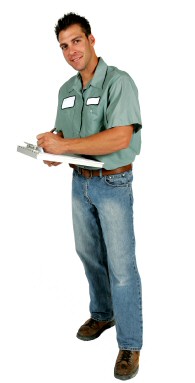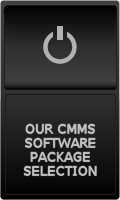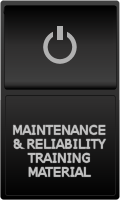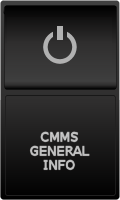Maintenance KPI Enquiries
Submit the form or
Maintenance Key Performance Indicators (KPI's or Metrics)

Effective key performance indicators (or metrics) are a valuable tool for triggering corrective maintenance actions. Often however, maintenance metrics are worthless since they do not provide worthwhile indications of maintenance performance, particularly when this performance is below acceptable levels.
The key to this is that a KPI should normally have a trigger level set on it that is used to initiate some corrective maintenance action. If no trigger has been set then your maintenance metric is ineffective. If no one has defined the level on the metric where performance becomes bad enough to require corrective action, then there is no point in recording it.
A realistic period must also be used for each metric - in some cases this may be one hour while in others it could be one year.
KPI Example as applied to a Production Process Maintenance Metric
Let's say that we are monitoring the production output from a critical machine. Maximum output volume from the machine is 1250 widgets per hour but rather than drive it at full speed production volumes are set at 1000 widgets per hour. Output is monitored as a KPI on a one hourly basis.
 In this example we could turn on a warning light when volumes drop below
950 per hour. At this point a maintenance technician would be called in
to address the problem. The significant thing is that our KPI is
set at 950 and this is defined as the trigger level at which some action
is required.
In this example we could turn on a warning light when volumes drop below
950 per hour. At this point a maintenance technician would be called in
to address the problem. The significant thing is that our KPI is
set at 950 and this is defined as the trigger level at which some action
is required.
The same principles can be applied to less obvious KPI's such as planned maintenance backlog. For example it may be decided that when PM backlog reaches a total of 100 hours then overtime must be used to reduce the backlog. Once again the key point is that a trigger level of 100 hours has been set.
Technicians and first line supervisors should be heavily involved in setting targets for performance indicators since they are usually best placed to decide what actually are acceptable targets and because management driven schemes often fail to work in the long term.
While it may be possible to create a metric for a particular factor it is not always practical. We must balance the effort involved and the cost of collecting the data with its actual or potential value. For example we may consider that it would be useful to develop a metric that indicates the number of work dockets completed against the number issued. Poor performance on this metric would indicate a reduction in commitment on behalf of the technicians to input data to the CMMS. For this to be useful however would entail a very significant amount of work in scanning the CMMS for each work docket which was not completed and then trying to determine to whom it was issued, etc.
Some Typical Maintenance Key Performance Indicators
- Overtime worked against plan
- PM schedule compliance
- Time taken to answer maintenance calls
- Budget compliance
- PM Backlog man-hours
- Critical Equipment availability (Don’t worry about non-critical equipment)
- Number of breakdowns (Unplanned maintenance)
- Production equipment performance (By output volume levels)
- Equipment performance (with respect to quality)
- MTBF
This is a link to some very comprehensive KPI Information >





